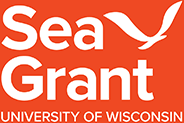News
[yotuwp type=”playlist” id=”PLhHCCseyxU3-DxqwDVtbuCTckY8iZzSPD” ]
Meet Wisconsin Sea Grant
[yotuwp type=”playlist” id=”PLhHCCseyxU38EjvA9RSyx3nJIKWSFWnsv” ]
Voices of the Coast
[yotuwp type=”playlist” id=”PLhHCCseyxU38UoJHR8JScu3ShzAZnPHC-” ]
Aquaculture
[yotuwp type=”playlist” id=”PL20775DB6A2159C89″ ]
Aquatic Invasive Species
[yotuwp type=”playlist” id=”PL7AE21D7941154E3C” ]
Coastal Processes and Engineering
[yotuwp type=”playlist” id=”PLF690407B820FA575″ ]
Education, Students and Fellows
[yotuwp type=”playlist” id=”PLhHCCseyxU393gfClV7QlHR2JKEfv4f2y” ]
Fish and Fisheries
[yotuwp type=”playlist” id=”PL1F790ECB55168CEF” ]
Groundwater
[yotuwp type=”playlist” id=”PLBA0ACC52BD1C1181″ ]
Shipwrecks and Maritime History
[yotuwp type=”playlist” id=”PL5E95DB99F7B96FB9″ ]


